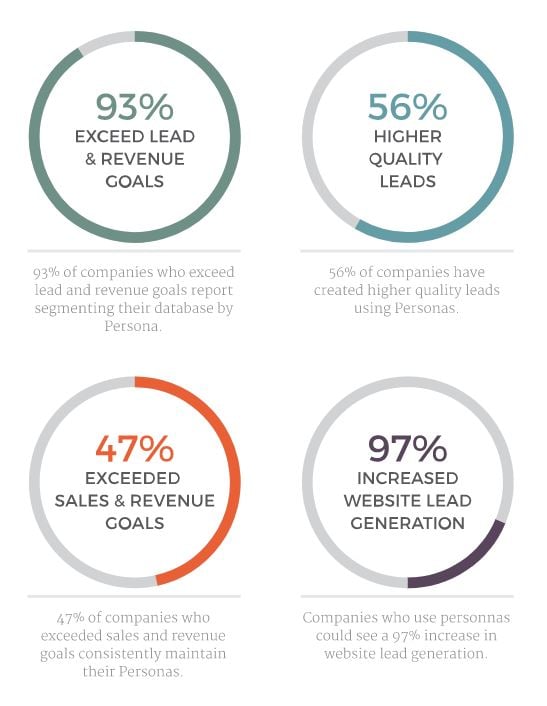Recently, an entrepreneur friend came to me for advice.
- "Guillaume, you who know about Marketing and Internet (sic), tell me how I can find a maximum of customers in a very short time!"
- "That depends, who are your customers usually?"
- "Oh, a little bit of everyone!"
This somewhat candid answer made me realize that many entrepreneurs, full of enthusiasm and quality, had not really any idea how "business" in the digital age worked.
Beyond this example, companies without exception face the same challenges : how to find customers, how to recruit well, how to communicate ?
Some of these challenges are harder to face than others - and that's not without consequences for their survival : about 20% of businesses fail at the end of their first year. By the end of their fifth year, 50% go out of business. And by the tenth year, that figure rises to 80% !
With survival rates like these, it's easy to understand the anxiety entrepreneurs feel during the first few years of business. The endurance race begins with an uphill climb!

Yet many common business problems and challenges are actually manageable. From finding clients, generating leads or building an email list, to hiring the right people and balancing quality and growth: solutions exist, as we'll see in these two articles.
Often, you'll need to take a step back, spend some time understanding the challenges you're facing, and reevaluate your strategy.
Here are six challenges facing businesses, along with my tactical advice on how to address them.
1 - How to find customers ?
This is the #1 problem for every company. Even the most prestigious companies have employees working every day to find new customers. Yes: Apple, Toyota and McDonald's don't just wait for prospects to come in on their own.
But for a smaller company that doesn't have that reach, finding customers can be particularly challenging. How do you know what to prioritize and where to allocate resources?
Our solution:
Finding customers starts with understanding who is and how your ideal customer behaves. In Inbound Marketing, we call this fundamental step defining the Buyer Persona.
In fact, shooting blind never works - you need to make sure you're getting the information out to the right people.
To do this, define your target customers as precisely as possible, what they do, what sites they spend time on online. In this way, you build a profile of your buyers.
Creating Buyer Personas can dramatically improve the results of your business. Once these profiles are established, you can start producing content and reaching your target customers on the sites where they spend time with messages that are relevant to them.
Here are 4 statistics showing the undeniable value of working on your personas:

- 93% of companies performing in terms of lead generation have segmented their customer base with personas.
- 56% of companies that used personas saw a substantial improvement in the quality of their leads.
- 47% of companies performing well in terms of lead generation keep their personas up to date.
- 97% of companies that used personas saw their website generate more leads.
(source)
That at least answers my friend's question! Let's see about the rest.
2 - How do you hire talent ?
The reason I put this question in the second position is that the issue of recruitment is often treated in the mode "stewardship will follow"! This is a mistake.
If finding clients is the #1 priority, finding good people is definitely the next best thing!
Hiring is probably the biggest challenge for businesses, let alone for small business leaders who tend to lack crucial resources early on. Hiring new employees is a big deal and a complex process.
The cost of hiring averages more than €4,000 per new employee for most companies.
That's why finding and hiring the right people who are truly interested in what you do is so important.
Our solution:
The Inbound Recruiting, of course !
I can attest to this: the Super Agency recruited two employees who had shown interest in our services by downloading our white papers. It makes sense in a nutshell, if we know how to attract clients who are truly interested in our services, we also know how to bring in talents who are truly interested in our company!
It is certainly easy to hire with a short-termist mindset: send out a job description, evaluate applicants, and make a decision.
But because of the high costs of hiring discussed above, it's important to invest a lot of time in the hiring process. Don't settle for good employees when you can find excellent ones, even if it takes longer.
It's the great employees that will help your company get to the next level.
You can do this through quality content, among other things: get candidates' attention towards your company and make them want to learn more about you. This will help you create a talent pipeline to recruit !
3 - How do I communicate my brand ?
Sometimes it seems to us that today's greatest brands have always existed.
Yet, less than twenty years ago, a brand like Google did not exist ! Airbnb is not even ten years old.
How did they make their name? How did they build their reputation ?
Can your brand gain the notoriety of the biggest?
Of course, most of the work, failures and mistakes of these companies have been made behind the scenes. But there are strategies for building word-of-mouth about your brand and giving it a great reputation.
Our solution:
There are many ways to spread brand awareness. I'd particularly note co-marketing and the clever use of blogs.
- The co-marketing: partnering with other brands will allow you to leverage their image and reputation to create "ambassadors of your brand" outside of your scope of influence. This is an effective way to get a lot of new contacts while improving your "organic" marketing efforts.
- Blogging: setting up a high-quality blog will help you build brand awareness. Not only does a blog help drive traffic to your website and convert that traffic into leads, but it also helps you establish a authority in your industry. You'll also gain credibility for your prospects. Blogging also makes it easier to create an email list. This will be covered in the following article "6 challenges businesses face (and their solutions) part 2".









